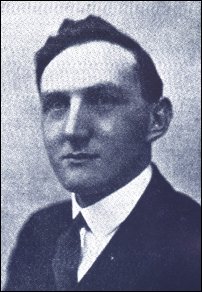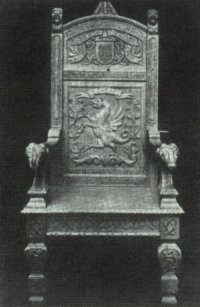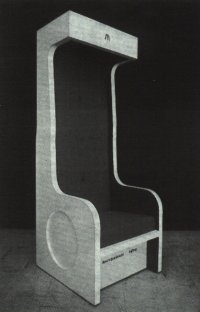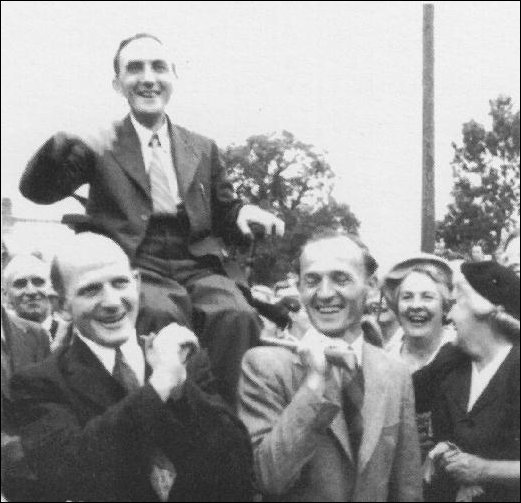LLWYD – THE REVEREND E. LLWYD WILLIAMS
(1907 - 1960)
Llwyd was one of several preacher-poets who ministered to their flock in Ammanford – a breed of people that seems to have disappeared with the decline of the Welsh language and its guardian for so long, religion. He was the youngest of ten children, born on the 12th December 1906 at y Lan, near Efail-wen, Carmarthenshire. He was educated at Brynconyn primary school, Llandysilio and at the county school in Narberth where he later began his career as an apprentice to a chemist. He was baptized in 1923 at Rhydwilym, and the traditions of that ancient church and the culture of the Prescelly district permanently influenced his literary work. After completing a course at Bangor Baptist College, 1928-31, he was ordained on 2 Sept. 1931 as minister of Tabernacl church, Maesteg. On 10 Sept. 1936 he was inducted minister of Ebeneser church, Ammanford, where he spent the rest of his life. He was highly esteemed as a minister and his services as a preacher were regularly sought at Baptist assemblies. He delivered an address (in Welsh) on 'This ministry' at the Assembly of the Baptist Union of Wales in 1943.
It was mainly his poetical works that brought him into prominence – his winning poems at the national eisteddfod, particularly his awdl 'Y Ffordd' (The Road) in 1953 and pryddest 'Y Bannau' (The Beacons) in 1954. (An 'awdl', or ode, is a long poem in the tradional 'cynghannedd' metres; a 'pryddest' is also a long poem, but in the free metres). He published 'Cerddi'r Plant' (Children's Songs) in 1936, with Waldo Williams; and a selection of his poems in 'Tir Hela' (1956); he composed poems for W. Rhys Nicholas (ed.), 'Beirdd Penfro' (Bards of Pembrokeshire) in 1961. One of his characteristics as a poet was his ability to experiment, without rejecting tradition. Two of his hymns appear in 'Y Llawlyfr Moliant Newydd' (A New Handbook of Praise) in 1955, and he was the author of the popular song, 'Pwy fydd yma 'mhen can mlynedd' (Who will be here after a hundred years), in 1943. He was for a time editor of 'Colofn yr Awen' (The Muse's Column), a column for poets in 'Seren Cymru' (Star of Wales), and was a member of the Carmarthenshire team of poets for the contests of 'Ymryson y Beirdd' (Contests of the Bards).
He was also a prolific writer of prose, which may, possibly, prove to be more long-lasting. He published Rhamant Rhydwilyrn (1939), a useful sketch of the history of the cause; 'Hen ddwylo' (Ancient hands) in 1941, containing portraits of characters of his early days at the foot of the Prescelly hills; 'Tua'r cyfnos' (Towards dusk) in 1943, a prize-winning novel in a competition held by Llyfrau'r Dryw (Wren Books); 'Dan y sêr' (Under the Stars), a programme presented by 'Urdd y Seren Fore' (Movement of the Morning Star) at the Assembly of the Baptist Union of Wales at Brynaman, 1948; and two travel books, 'Crwydro Sir Benfro' (Wandering Pembrokeshire) (1958, 1960). He was also responsible for the weekly column, 'Yn y ty wrth y tân' (by the fireside) , in The South Wales Guardian.
On 11 Aug. 1936 he married at Rhydwilym Eiluned James, Maenclochog, and they had a daughter, Nest, who died in 2004. He died suddenly on 17 January 1960, and was buried in Rhydwilym cemetery. A memorial service was held at Rhydwilym, 5 February 1960, and a programme was performed at Maenclochog on 21 March 1979 as a tribute to him.
National Eisteddfod double winner
His talents as a Welsh poet were rewarded twice, first with the Chair Prize at the 1953 National Eisteddfod held at Rhyl where he used the bardic name of "Ishmael". The next year he won the Crown Prize at the Ystradgynlais Eisteddfod of 1954, this time using the bardic name of "Awelog" ("the breezy one"). He joins that rare band of poets who have won both the Chair and Crown prizes.The Chair prize is awarded to the best entry of a poem using the traditional 24 cynghanedd metres. The prize is always a chair commissioned from a prominent sculptor of the day. The Crown prize is awarded to the best poem using free metres and consists of a crown, also commissioned from a leading designer.
The chairs awarded for the Chair prizes are themselves part of the cultural content of eisteddfodau and reflect the ideas of the commissioned sculptors as they change through the years. On returning from the Ystradgynlais Eisteddfod in 1954 he was met by large crowd on the outskirts of the town who carried him on their shoulders into Ammanford. Banners proclaiming "Croeso i Llwyd" (Welcome to Llwyd) were placed across the road and the procession was led into town by the Ammanford Silver band playing Handel's "See the Conquering Hero Comes". After congratulatory speeches, a spontaneous Gymanfa Ganu (Festival of Song) was taken up by the gathered throng.
See the conquering hero comes. Llwyd being carried into Ammanford in triumph after winning the Crown Prize at the Ystradgynlais Eisteddfod of 1954. (Thanks to Dr. Huw Walters of the National Library of Wales for the photograph.) Not bad for a mere poet. By today's standards only a successful sports or pop star would get such treatment. The last time in fact that such a welcome was given to a local hero was in 1971 when Cwmgorse born Gareth Edwards returned home from the triumphant British Lions rugby tour of New Zealand. This had been the first time that the British Lions had defeated New Zealand in a Test series. When Gareth Edwards got off the train at Neath, he was greeted, not just by his family and friends, but by the entire village who drove him in a motorcade the ten miles up the valley to a welcoming reception at the local rugby club.
Llwyd published several books of poetry and was also a hymn writer of substance. He died suddenly in 1960 aged 53. In 1973 a road in the new housing estate added to Myddynfych was named in his memory – Heol Llwyd (Llwyd, or Grey, Road). Coincidentally the name of his Chair winning poem in the Rhyl National Eisteddfod in 1953 was "Y Ffordd – the Road".
When Amman Valley Grammar School became a comprehensive in 1970, one of the school houses was called 'Llwyd' in his memory.
(The other houses in the new comprehensive school were also named after local poets, namely Watcyn, Amanwy and Nantlais. The houses in the former Grammar School had been named after the Welsh princes – and warriors – Hywel, Glyndwr, Llewelyn and Dewi. An improvement in whom we should regard as role models, perhaps).
Sources:
– Dictionary of Welsh Biography 1941 - 1970, page 292, published by the Honourable Society of Cymmrodorion, 2001
– W T H Locksmith, 'Ammanford, Origin of Street Names and Notable Historical Records', published by Carmarthenshire County Council in 1999.Date this page last updated: October 1, 2010




